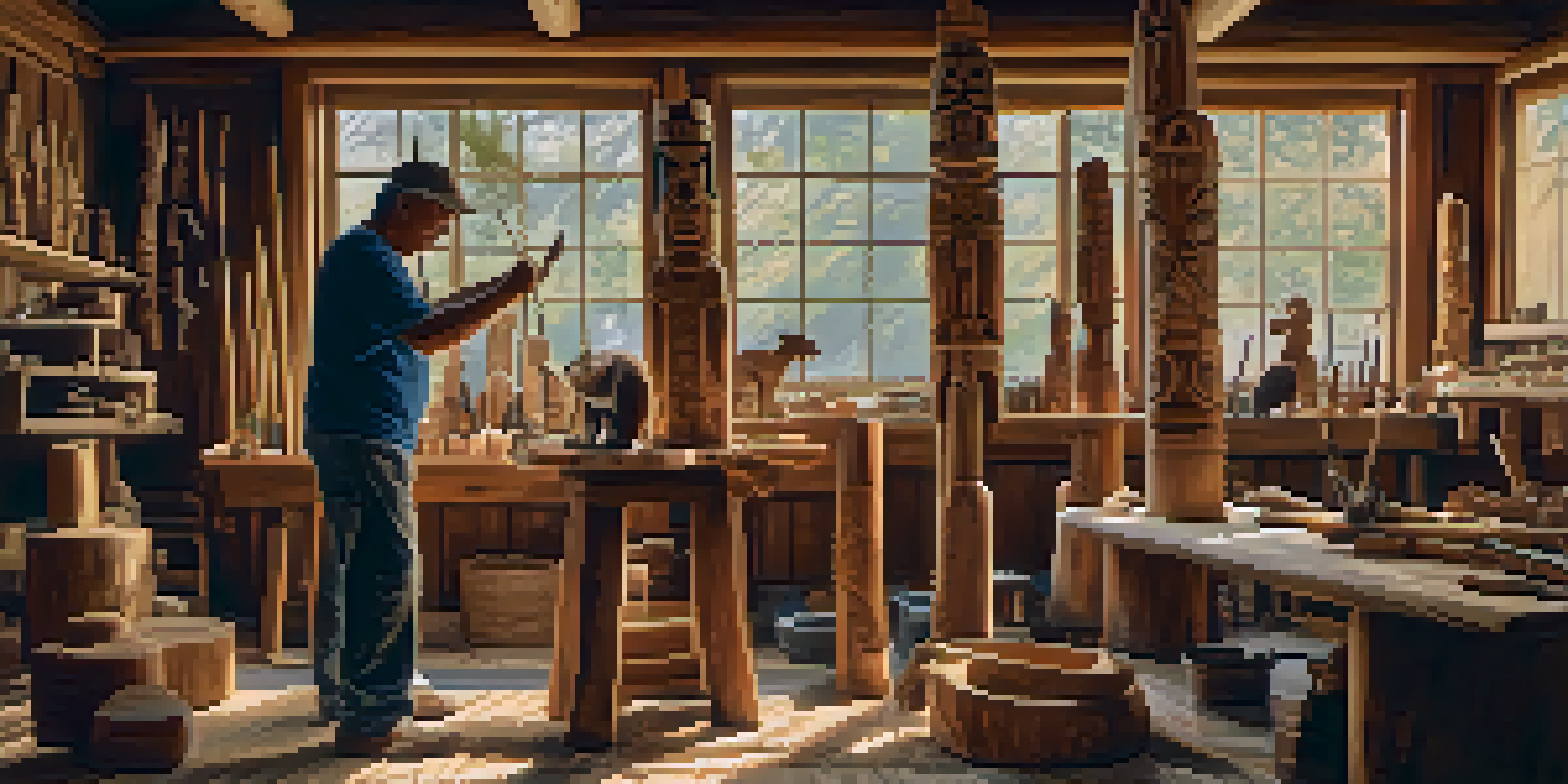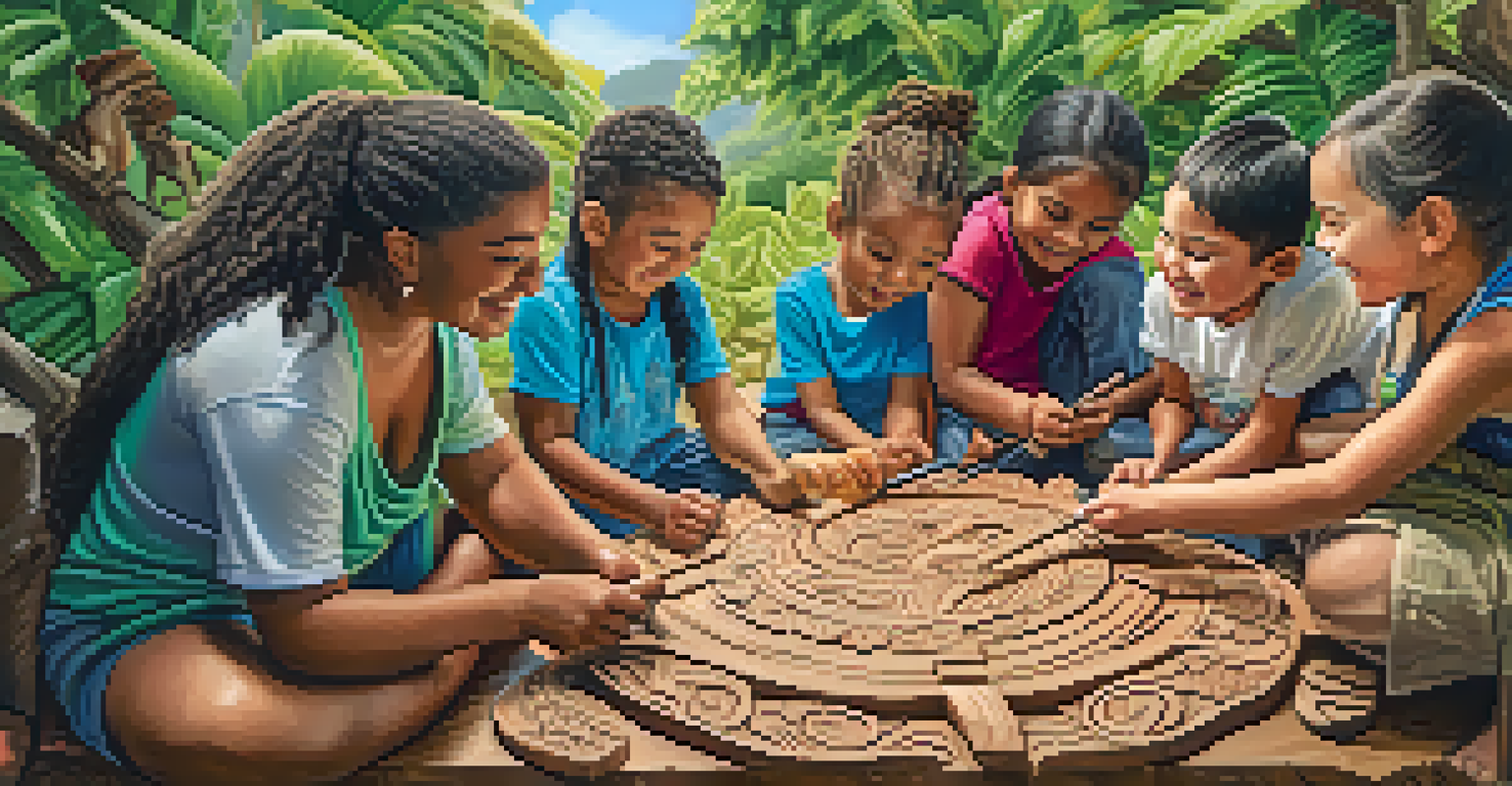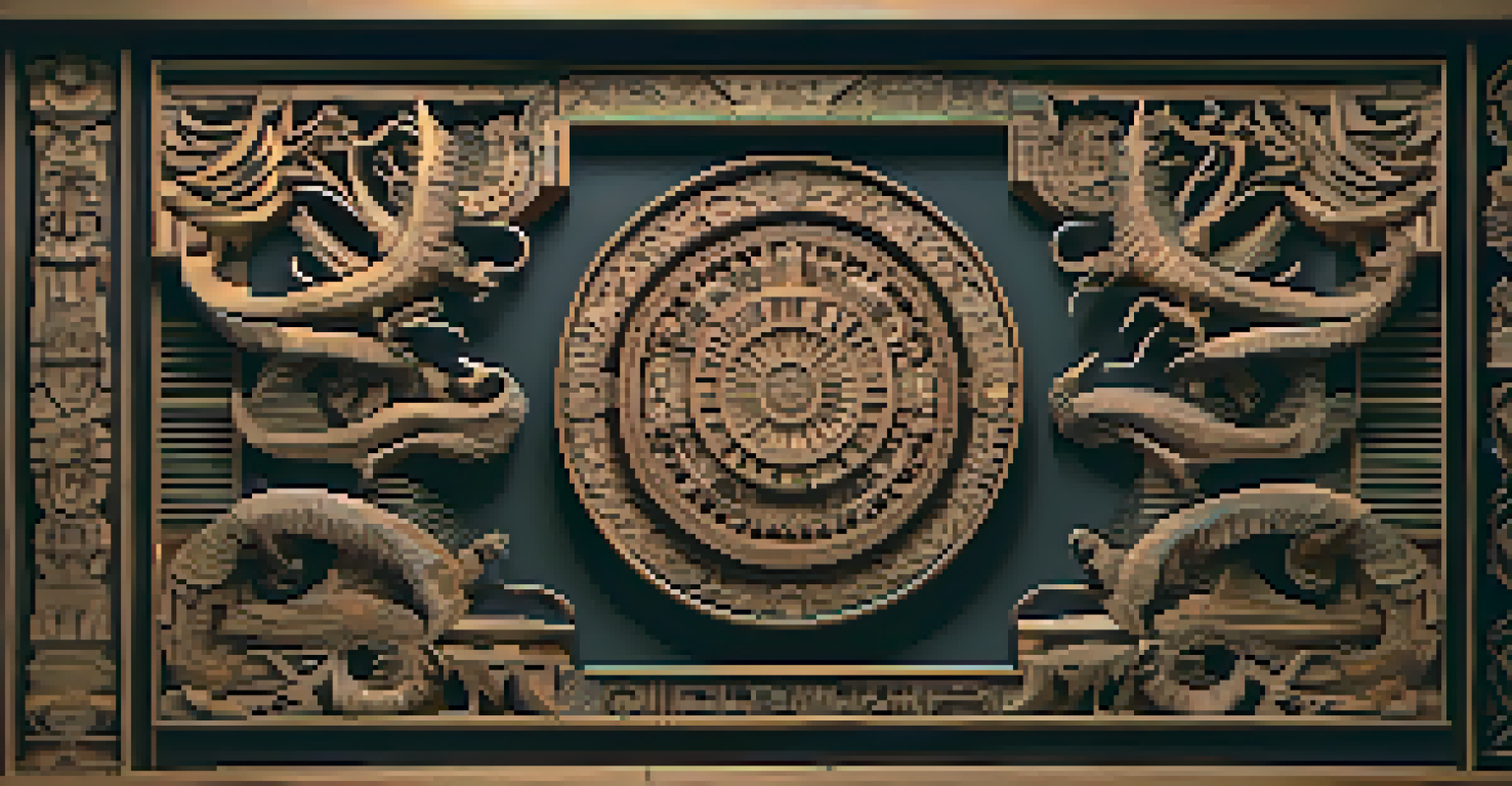Carving as Storytelling: Cultural Narratives in Art

Understanding Carving as a Form of Storytelling
Carving is more than just a craft; it’s a vibrant form of storytelling that captures the essence of cultures. Each piece carved from wood, stone, or bone tells a story that reflects the beliefs, experiences, and history of its creators. Just like a well-told tale, carvings can evoke emotions, provoke thought, and transport us to different times and places.
Art is the most beautiful of all lies.
For instance, Indigenous tribes in North America often carve totem poles that represent ancestral stories and community values. Each figure on a totem pole has its own significance, weaving together the tribe's history and beliefs into a visual narrative. This illustrates how carving serves not just as decoration but as a medium for communication and cultural preservation.
As we explore the world of carving, we begin to appreciate the intricate details that contribute to a larger narrative. The textures, shapes, and symbols used by artisans are intentional, conveying messages that might otherwise remain untold. This interplay between art and story is what makes carving a powerful vehicle for cultural expression.
The Historical Roots of Carving in Various Cultures
Carving has deep historical roots across various cultures, often intertwined with religious and social practices. In ancient Egypt, for example, carvings within tombs depicted scenes of the afterlife, serving both as a guide for the deceased and as a testament to the beliefs of the living. This practice shows how carving was used as a narrative tool to convey important cultural beliefs.

Similarly, in African cultures, carvings are often used in rituals and ceremonies, embodying the spirits of ancestors or elements of nature. Masks carved for dance performances tell stories of community identity and heritage, allowing participants to connect with their past and each other. Through these examples, we see how carving acts as a bridge between generations.
Carving as Cultural Storytelling
Carving serves as a vibrant form of storytelling that encapsulates the beliefs and histories of various cultures.
Moreover, these historical carving practices emphasize the significance of preserving cultural narratives. As societies evolve, the stories told through carving adapt but remain rooted in tradition, highlighting the enduring nature of storytelling within art. This blend of history and artistry continues to inspire new generations of carvers.
Symbolism in Carving: A Language of Its Own
Carvings are rich with symbolism, where every detail can hold significant meaning. Take the spiral, for instance, which often symbolizes growth and the cycle of life in many cultures. By understanding these symbols, we can unlock deeper narratives embedded within the artwork, revealing how different cultures interpret life and existence.
The painter constructs, the photographer discloses.
In Polynesian cultures, for example, carvings often feature intricate patterns that convey tribal identity and social status. These patterns are not just decorative; they are a language that communicates the wearer’s lineage and cultural heritage. This shows that carving is not merely an artistic endeavor but a method of storytelling that carries profound cultural significance.
Thus, when engaging with carved art, audiences are invited to decipher these symbols and engage with the stories they represent. This interaction not only enriches our understanding of the artwork but also fosters a greater appreciation for the culture from which it originates. In this way, carving becomes a dialogue between the artist and the beholder.
Modern Carving: Bridging Tradition and Innovation
In today’s world, modern carving continues to evolve, blending traditional techniques with contemporary themes. Artists are now experimenting with new materials and methods, while still honoring the narratives of their ancestors. This fusion of old and new opens up exciting possibilities for storytelling through carving.
For instance, some modern carvers are incorporating technology, such as laser cutting, to create intricate designs that pay homage to traditional motifs. This approach not only showcases their craftsmanship but also invites viewers to engage with familiar stories in a fresh context. It’s a beautiful reminder that storytelling through carving is not static; it’s a living tradition.
Community Engagement Through Carving
Carving fosters community connections by bringing people together to share skills and stories across generations.
Moreover, these contemporary works often address current social issues, making carving a relevant form of expression in today's society. By tackling themes like identity, migration, and environmental concerns, modern carvers continue the tradition of storytelling, ensuring that cultural narratives remain alive and impactful. This evolution enriches the art form and broadens its audience.
Carving as a Community Activity: Building Connections
Carving often serves as a communal activity, bringing people together to share stories and skills. Many cultures have traditional carving workshops where individuals can learn and practice together, fostering a sense of community and shared heritage. This collective experience not only strengthens bonds but also ensures that storytelling traditions are passed down.
In some Native American communities, for instance, carving is often a family affair, where skills are taught from one generation to the next. This not only preserves the art form but also deepens familial connections, as stories about ancestors and tribal history are shared during the process. Such communal activities highlight the importance of storytelling in nurturing relationships.
Engaging in carving as a group allows for a collaborative storytelling experience, where each participant contributes their unique perspective. This inclusive approach not only enhances the richness of the narrative but also promotes cultural understanding and appreciation. In essence, carving together creates a tapestry of stories that connect individuals on a deeper level.
The Role of Education in Preserving Carving Traditions
Education plays a crucial role in preserving the art of carving and the cultural narratives it embodies. Through workshops, classes, and mentorship programs, aspiring carvers can learn traditional techniques and the stories behind them. This transfer of knowledge is essential for keeping these practices alive for future generations.
Many communities recognize the importance of teaching carving as a way to maintain their cultural heritage. Schools and cultural centers often offer programs that focus on traditional carving, allowing students to connect with their roots while developing their artistic skills. This educational approach fosters a sense of pride and ownership over cultural narratives.
Education Preserves Carving Traditions
Educational initiatives are essential for passing down traditional carving techniques and the cultural narratives they embody.
Moreover, incorporating carving into educational curricula can enhance students’ understanding of diverse cultures. By exploring the stories conveyed through carving, students can gain insight into the values and beliefs of different societies. This not only enriches their educational experience but also promotes empathy and appreciation for cultural diversity.
The Future of Carving: Innovations and New Narratives
As we look to the future, carving is poised to embrace new innovations that expand its narrative potential. Artists are exploring mixed media, combining traditional carving with painting, photography, and even digital art, creating multifaceted storytelling experiences. This evolution reflects the changing dynamics of culture and art in a globalized world.
Furthermore, the rise of social media platforms provides a space for carvers to share their work and stories with a wider audience. Through virtual galleries and video tutorials, artists can connect with enthusiasts and fellow carvers worldwide, fostering a global community centered around storytelling. This connectivity enriches the art form and brings new narratives to the forefront.

Ultimately, the future of carving lies in its ability to adapt while remaining rooted in tradition. As artists continue to push boundaries and explore new themes, carving will remain a vital medium for storytelling, ensuring that cultural narratives are preserved and celebrated for generations to come.